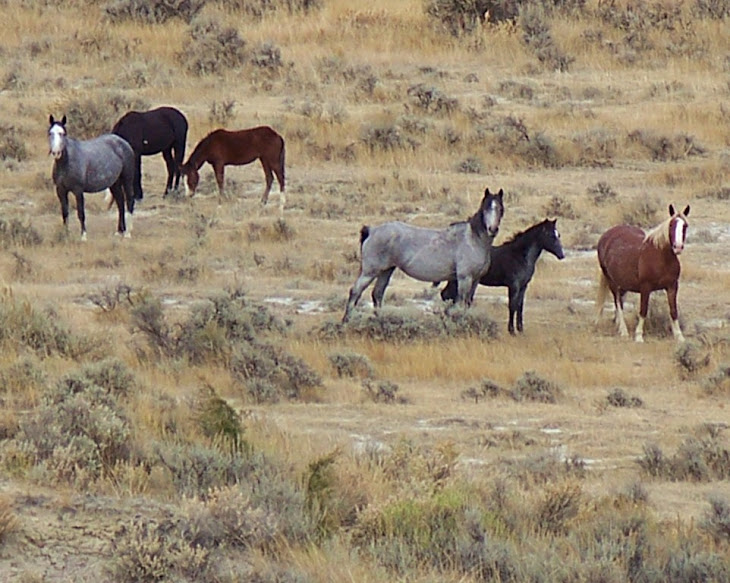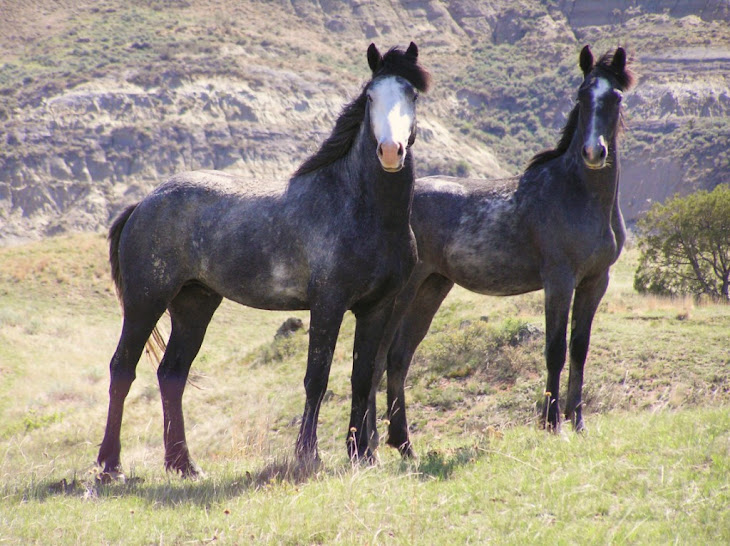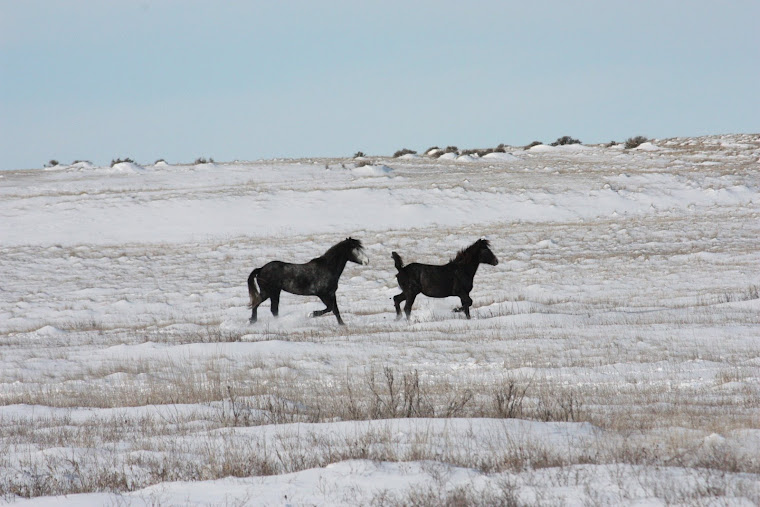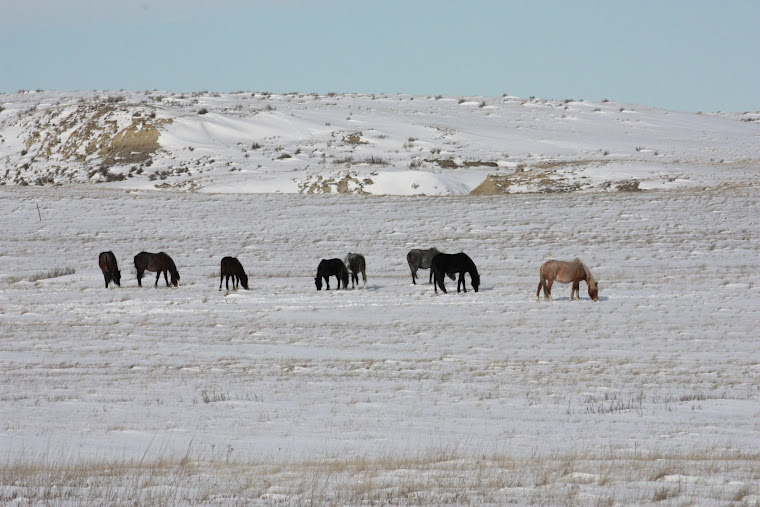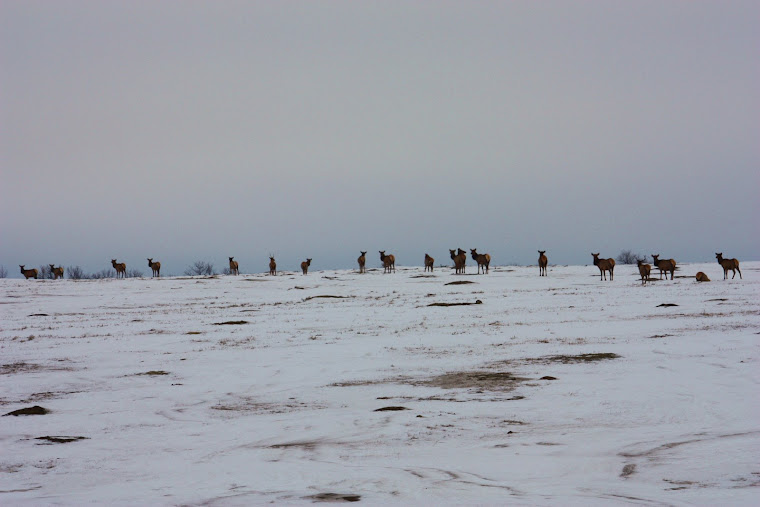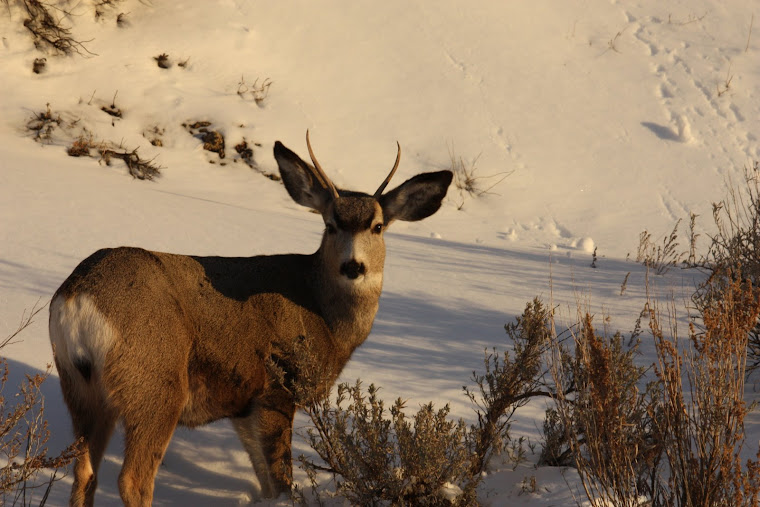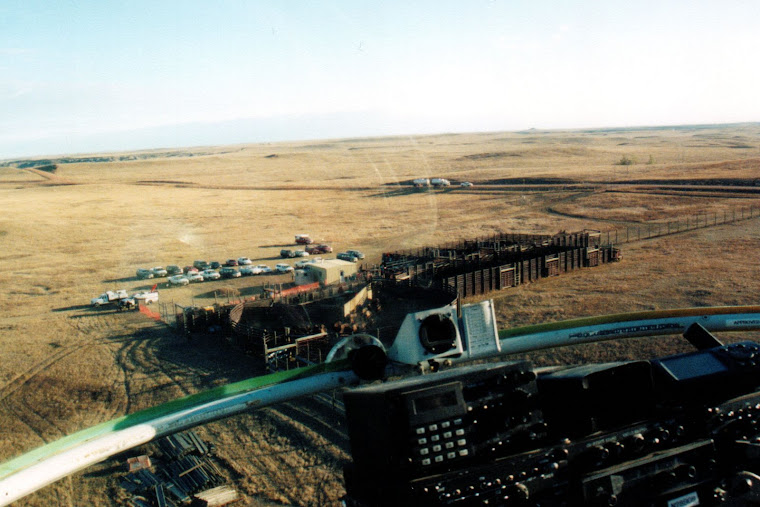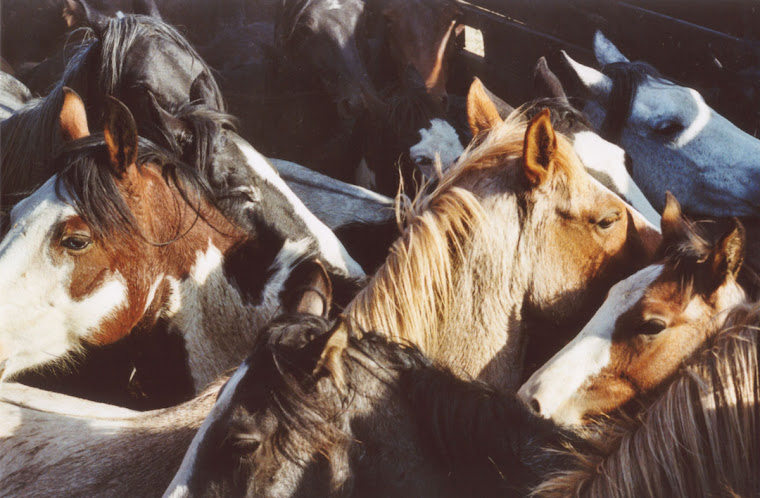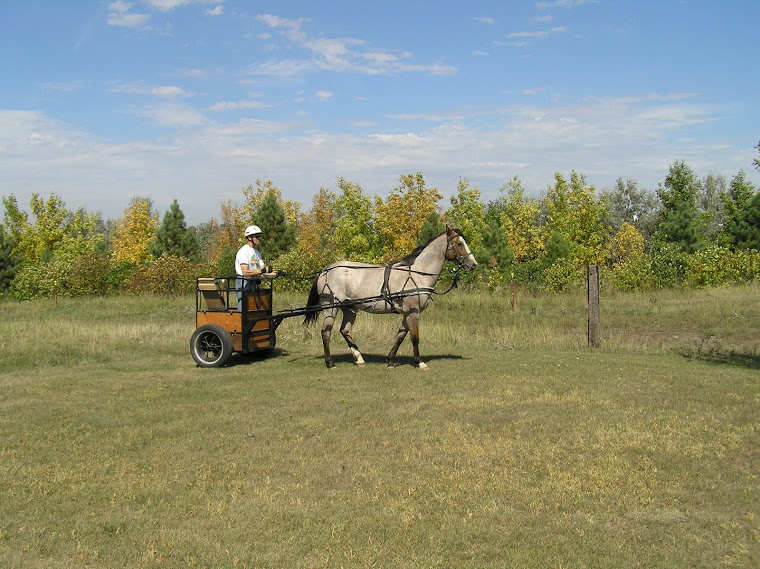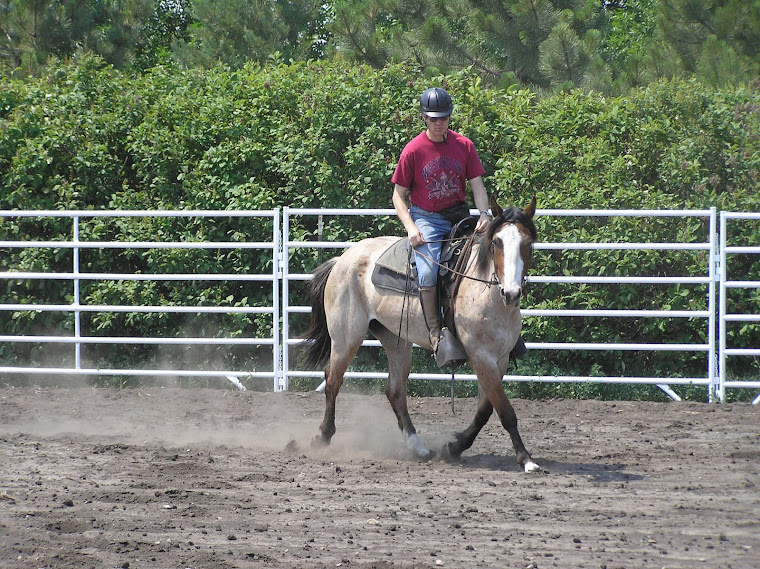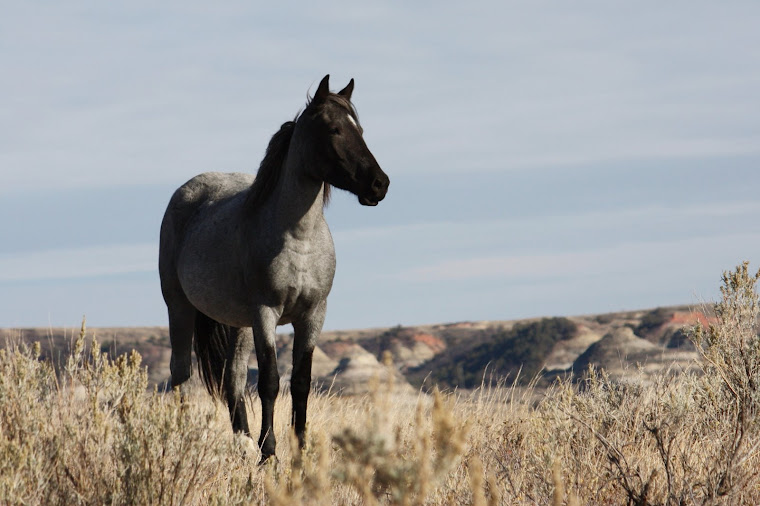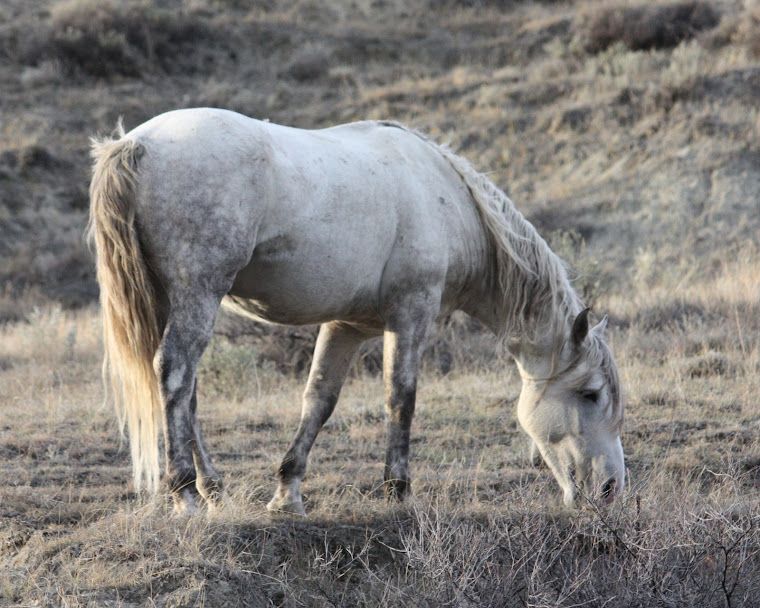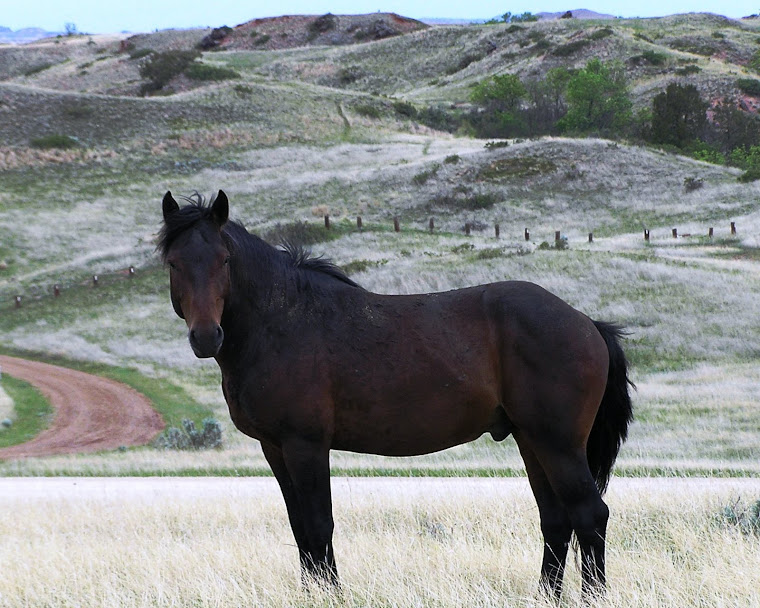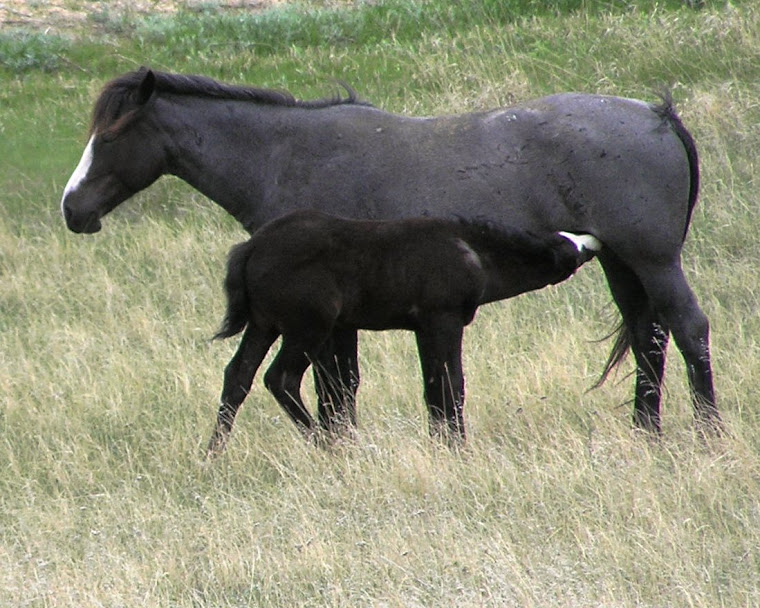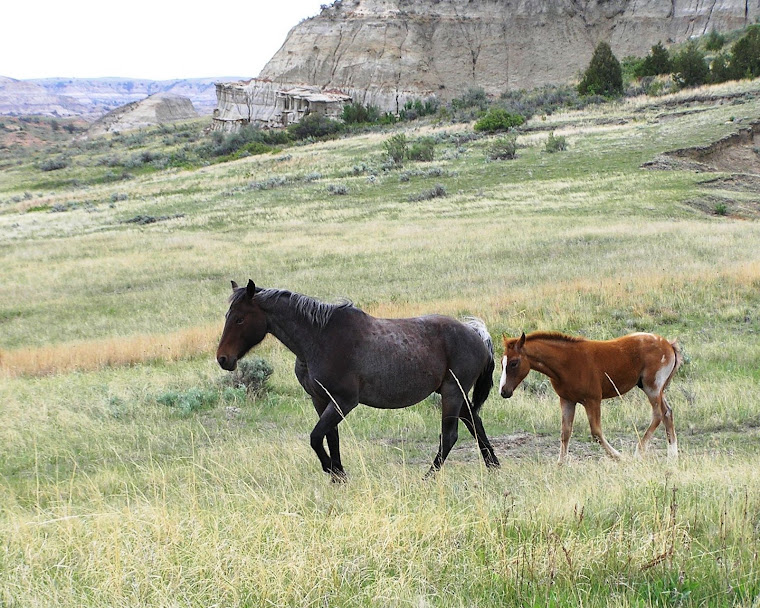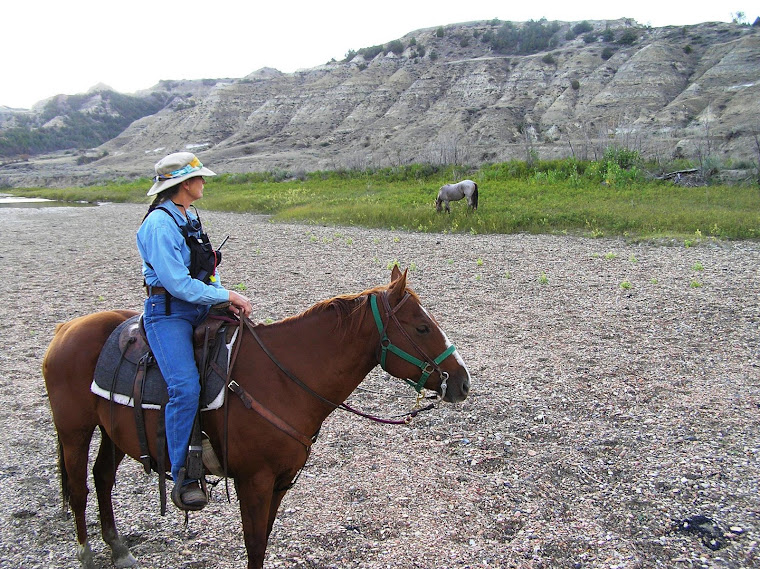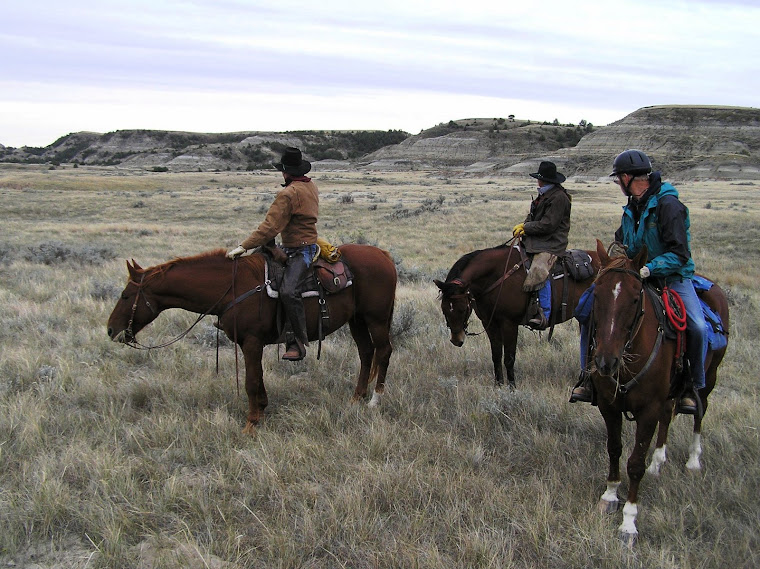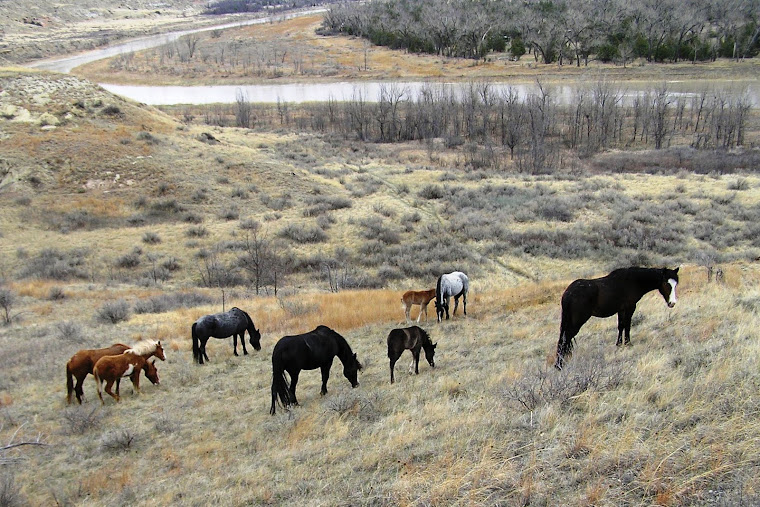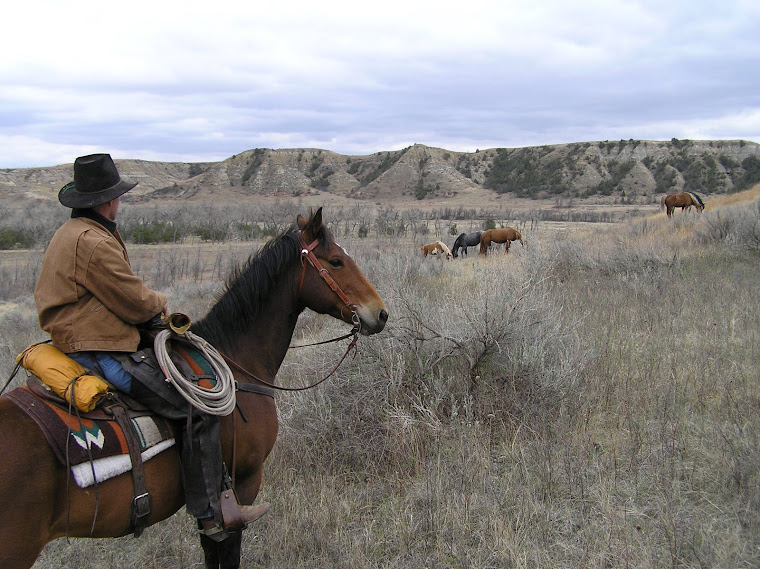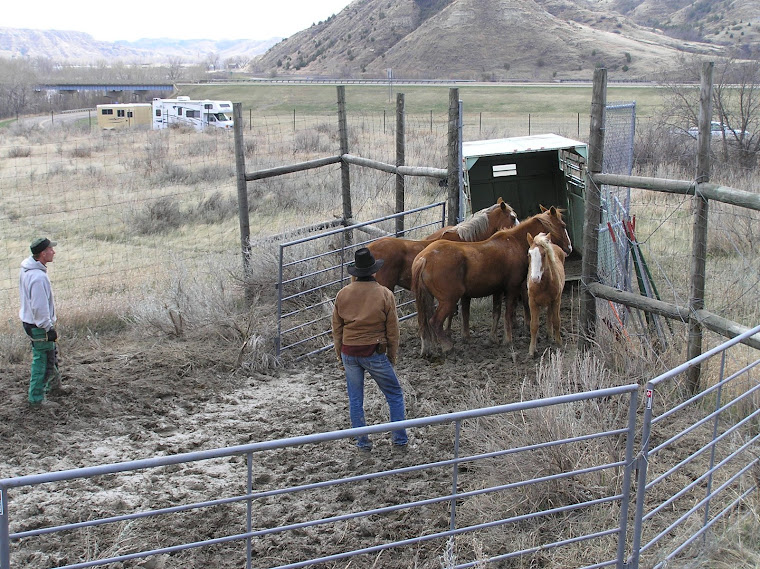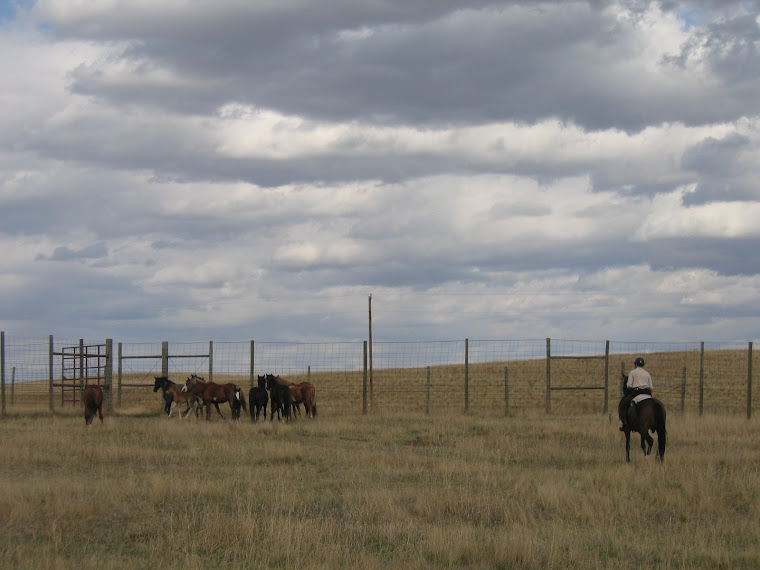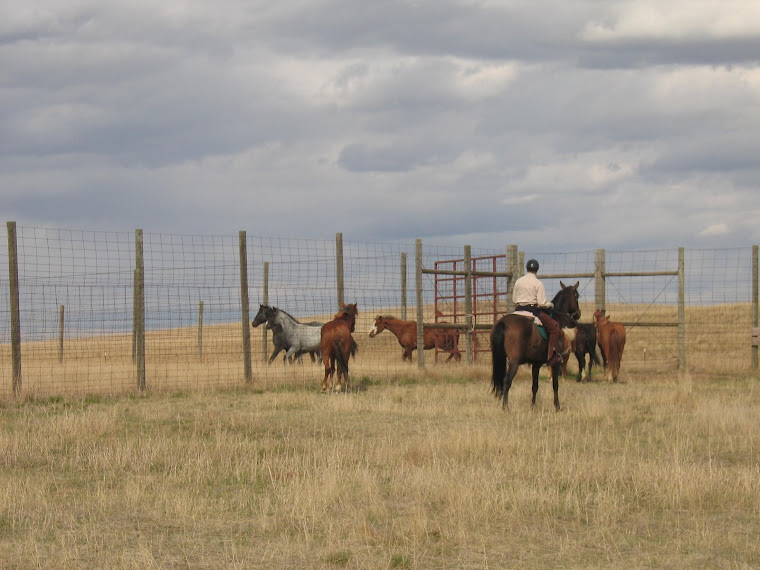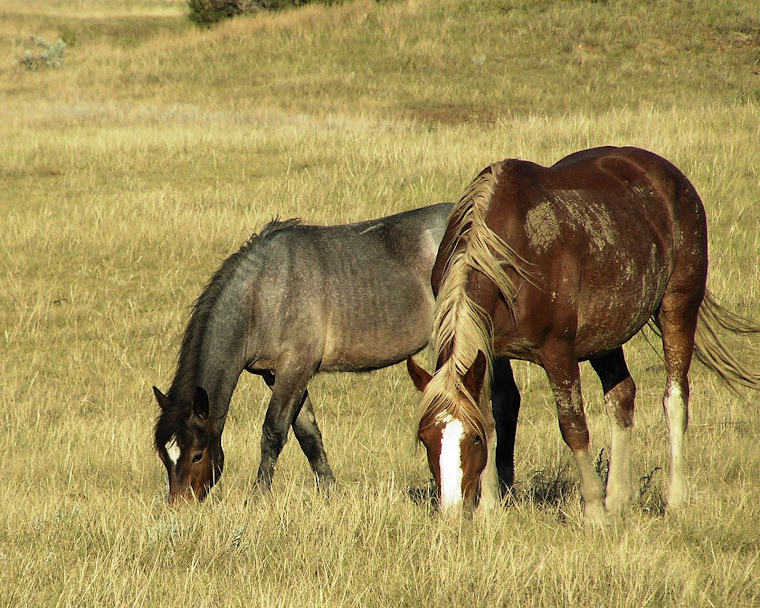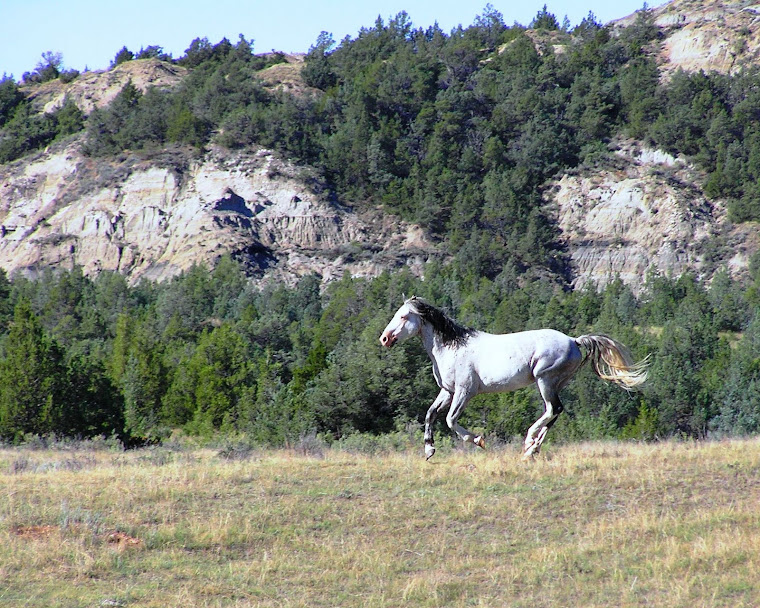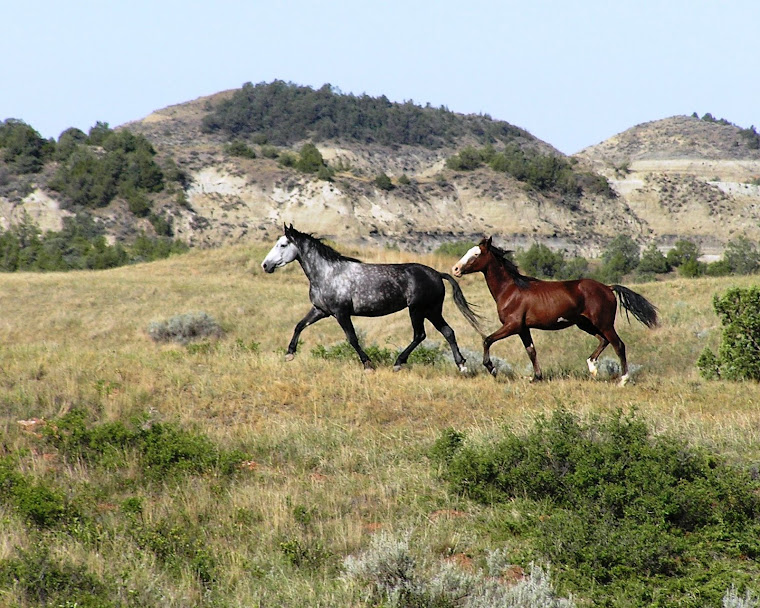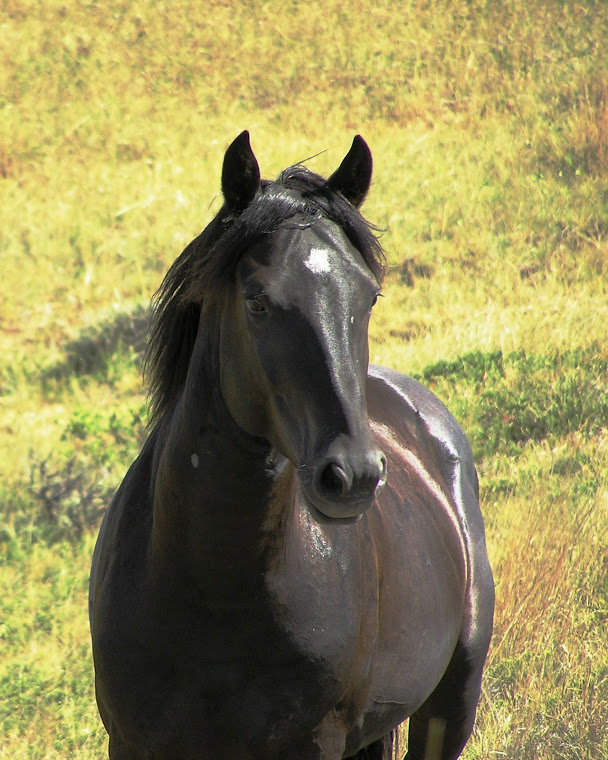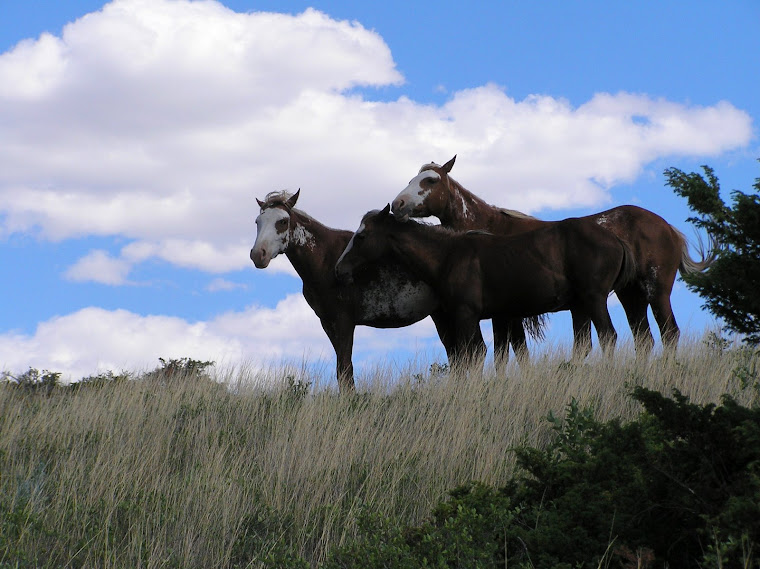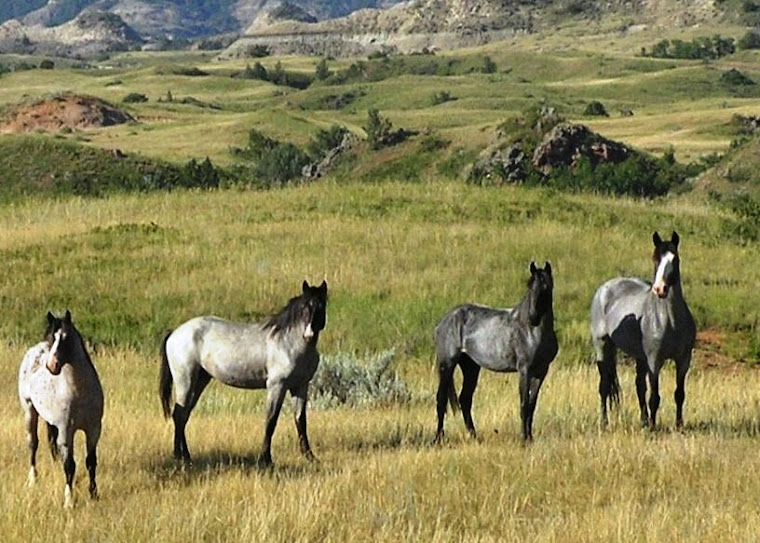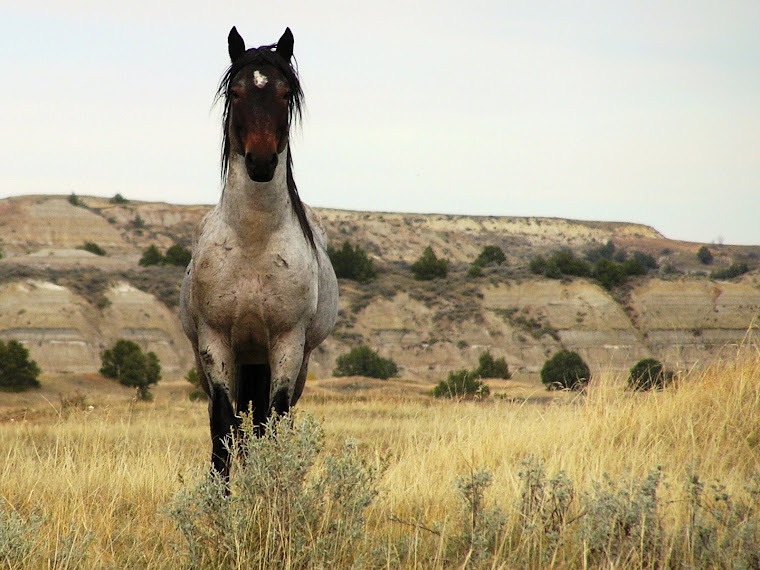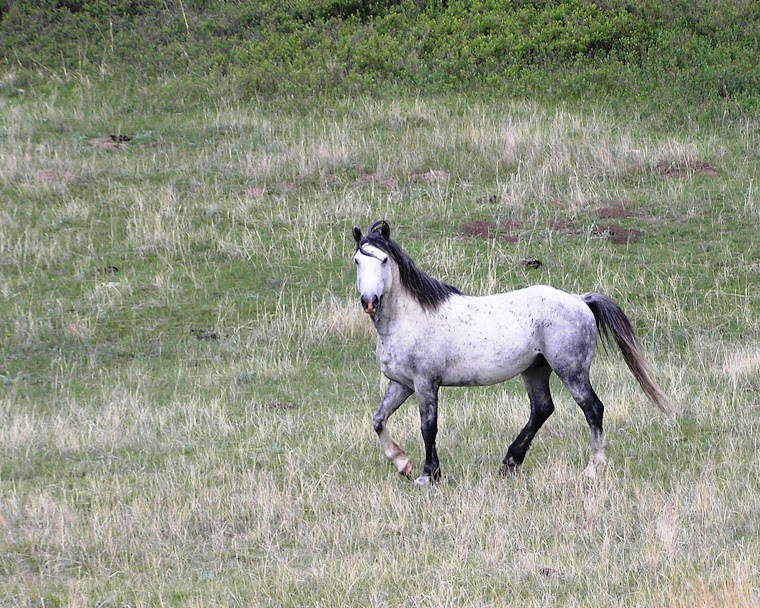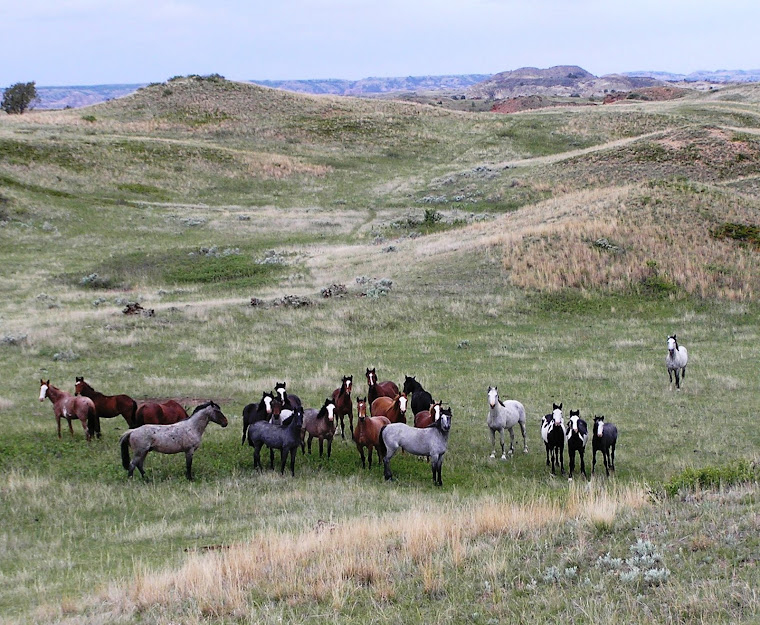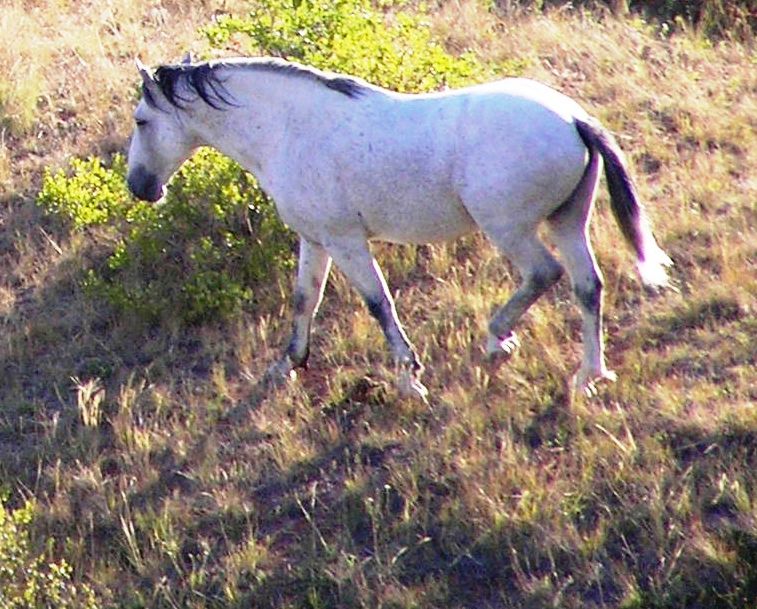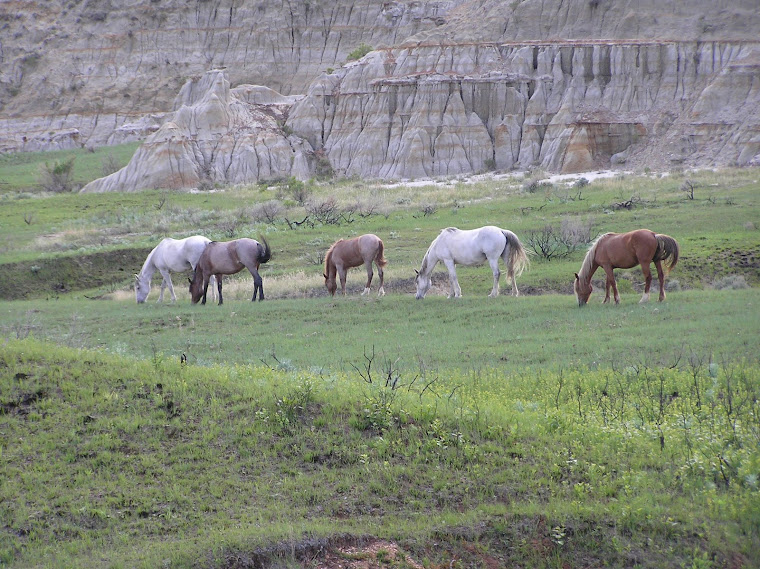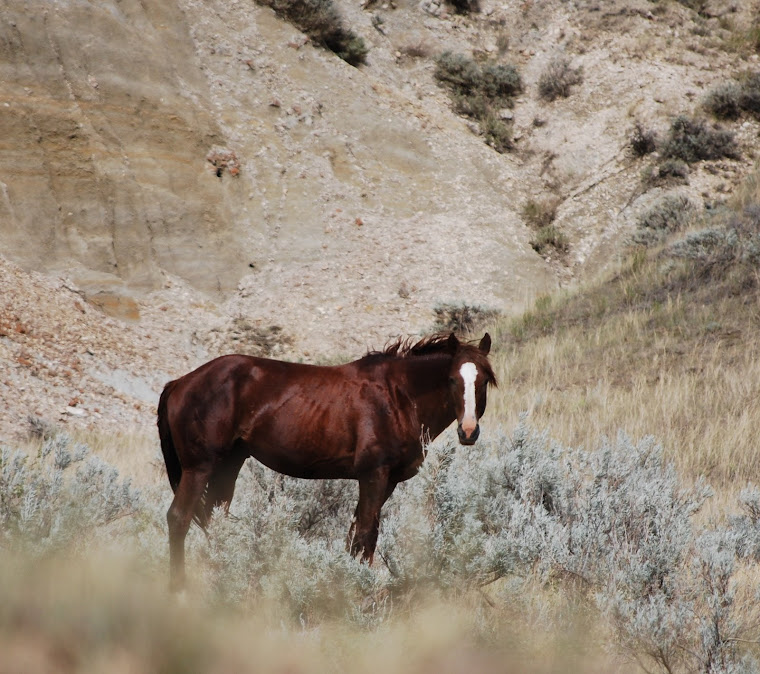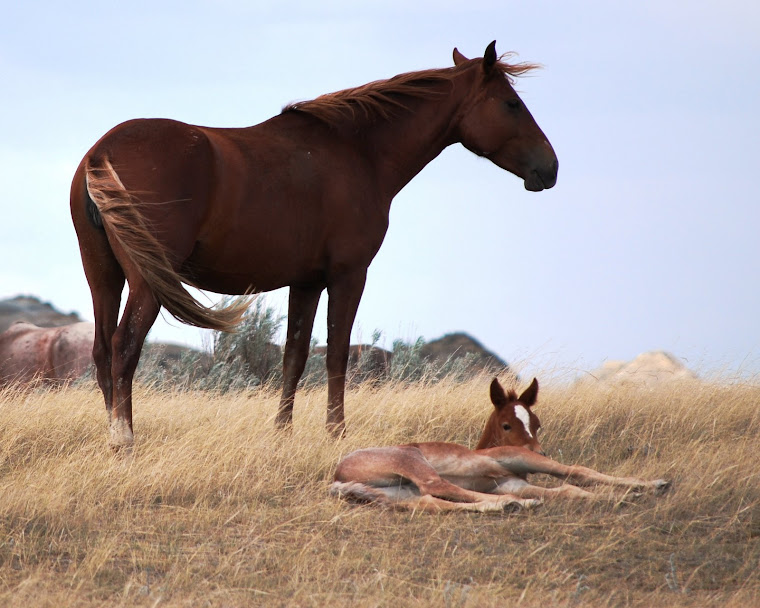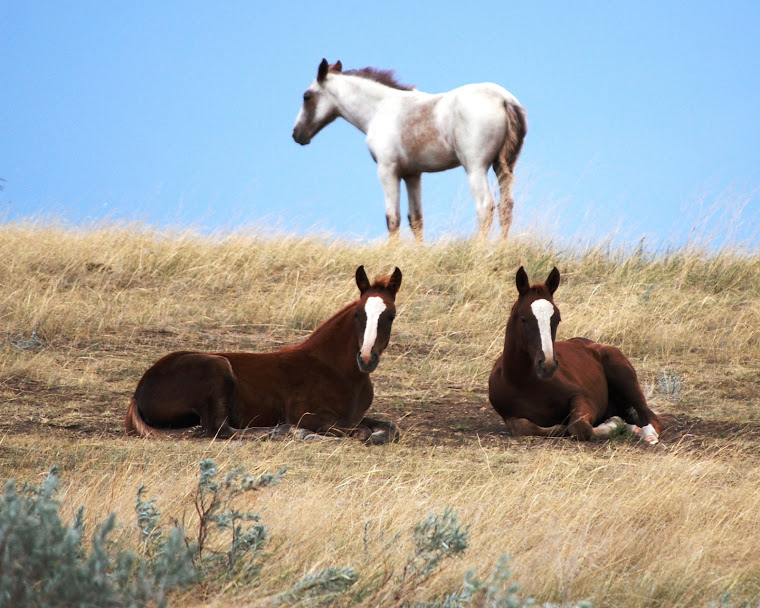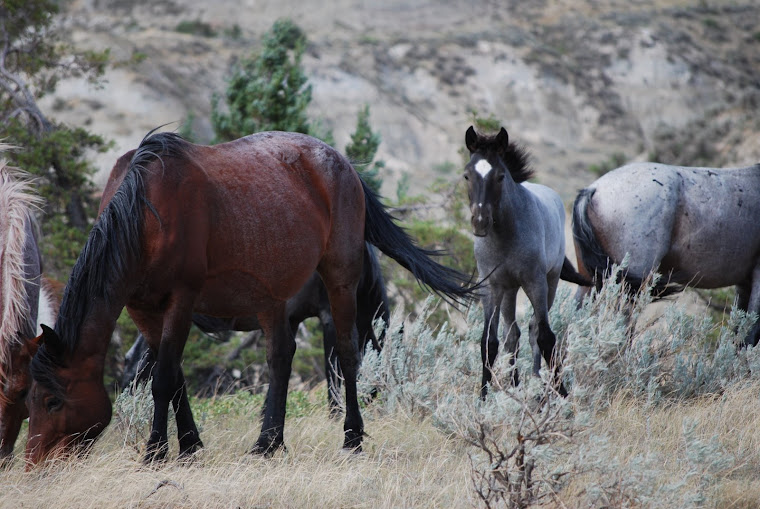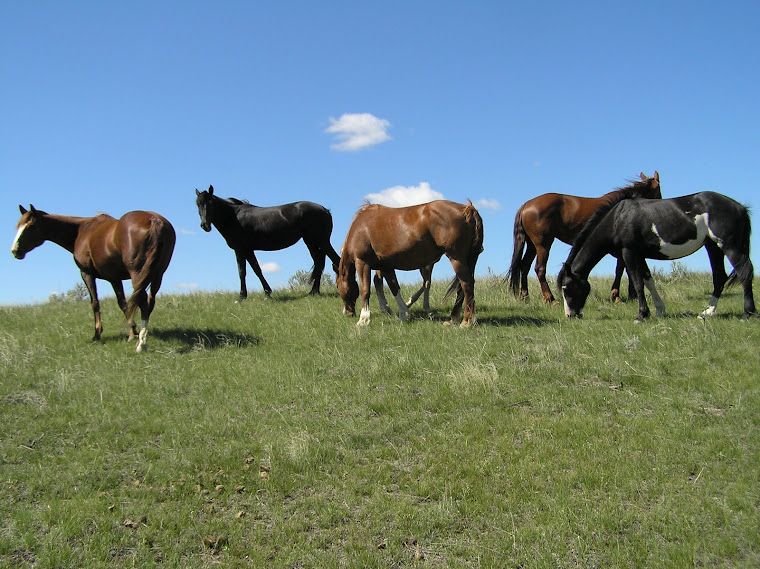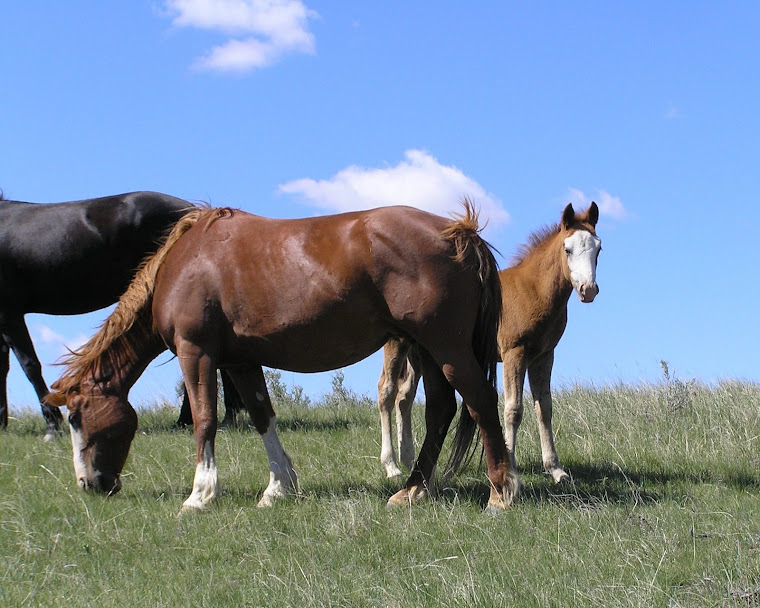Once both horses had been touched, scratched, and knew that we meant them no harm, it was time to expect more. I realize that many trainers take these steps much faster, but, though winter provides a longer period of time to accomplish the gentling process, it is wrought with obstacles that hamper, disrupt, and delay the work. Our horses are outside where we do not have the best footing and the weather in North Dakota can be down right frustrating when the temperatures hover around zero for weeks at a time. We've had to make the best of the conditions we've had in training these colts.

Hails remains my high achiever. Hail puts up with just about anything as long as it means he can stand and get petted. Whether it's a brush, a halter, a lariat, or a saddle blanket, he enjoys getting rubbed with it. He wore his blanket around the pen and wasn't too concerned about it flapping in the wind. So tolerant about letting me handle his feet, he let us trim his front feet today. I wouldn't say he leads well yet, but he's getting the hang of it. I think he is coming along very well since I really haven't spent that much time with him and the icy footing has made it dangerous to move him around a lot.
It's good that I have a more challenging colt, because he gives me something to write about on this blog. I've taken this gentling process more slowly with Hawk as well as Hail, partly because of the icy footing, and partly because getting him drenched with sweat from running around the pen would put him in danger of getting sick. Hawk has made steady progress, but he struggles with controlling his fear. Though he thoroughly enjoyed my scratching him from head to tail, he could only control his fear so long before he would leap away without warning. I was very aware of the need for me to release him often for every submission, but it was three months and he was still jumping away without any noticeable change in my activity. Luckily Hawk knows from the work I have been able to do with him that he is supposed to face me, so rather than run away he often just backs away, which allows me to chase him around backward. Backing is slower but much more work than running forward, so it is safer and an even harder penalty for not overcoming his fear and trusting me.
Still needing some fresh ideas of how to speed the process along, I went to a colt starting demonstration by Ken McNabb at our Ag Days in Bismarck. They finally found a tough colt for him, so it was interesting to see how Ken adapted his approach to fit the colt and the facility. Since the colt wanted to jump out of the pen into the crowd at the Civic Center, Ken was not able to move him around as he had planned; he quickly went to plan B and roped him. With that additional control Ken could keep the colt and the crowd safe. As he worked the colt to the point of having him ready to ride, I realized that the rope would be a good tool for me to use in helping Hawk face his fears. One small hitch was that I don't rope and didn't even have a decent one. No problem! Going to one of the local tack shops, I asked for a "Rope for Dummies." Chip suggested a used one and showed me a box full of them. Using my trained eye, I looked for the perfect lariat that would change this dressage rider into a roper. Actually, I just picked a green one because it was prettier than the dirty white ones. I was ready for action and the next chapter in Hawk's training.
Armed with my new rope I entered the pen, pointed to the gate of the round pen, Hawk obediently trotted inside, and we were ready for our first training with the lariat. Earlier, when moving him around the pen, I had tossed the knotted end of an old rope at Hawk to get him used to having it touch him, so it wasn't so frightening to have me toss a loop at him as I moved him around the pen this time. Closing in, with my heart in my throat, I tossed a few loops from the back toward his head (so that I wouldn't crack him in the eye with my poorly thrown loop). Success!; I had the wild colt on the end of a rope, aaaaaaaah, now what would I do with him?
With the noose around his neck, Hawk took off for the other side of the pen. Wondering if I would soon become a horse powered skier in the icy pen, I set my feet and pulled the slack out of the rope. The noose tightened around his neck and Hawk swung around to face me with a rather surprised look in his eyes. After a moment of reward with a slack rope, I moved him around the pen again, told him whoa, and brought him around to face me again. After a few repetitions of moving him, asking him to stop, and bringing him around to face me with tension on the rope, we were ready to test his patience and control while standing. He let me rub him all over on the left, but was still jumpy with me on the right so he jumped away a couple times and ran backward several times, but every time he felt the noose tighten and bring him to face me. By the end of the session that day I was able to rub him all over and brush him head to tail without having him jump away. Two days later I was able to repeat the brushing with no rope and no leaping away!

Each day with the rope has brought more success in getting him to tolerate being touched with new objects, farther down each leg, and onto his face. Now if he starts to move away, I can tell him whoa and put a slight pressure on the rope; he stops. He is starting to let me lead him by putting pressure on the rope from the side; when he submits and moves toward me he is immediately rewarded with slack in the rope. Today, the fourth day with the rope, I was able to sack him out with the lariat, the halter, and a saddle blanket. Hawk still struggles with his fears, most times cringing as the blanket is tossed his way, but he is standing his ground and gaining control over his instinct to run. He is closer to being the quiet, trusting horse he is destined to be.

Hails remains my high achiever. Hail puts up with just about anything as long as it means he can stand and get petted. Whether it's a brush, a halter, a lariat, or a saddle blanket, he enjoys getting rubbed with it. He wore his blanket around the pen and wasn't too concerned about it flapping in the wind. So tolerant about letting me handle his feet, he let us trim his front feet today. I wouldn't say he leads well yet, but he's getting the hang of it. I think he is coming along very well since I really haven't spent that much time with him and the icy footing has made it dangerous to move him around a lot.
It's good that I have a more challenging colt, because he gives me something to write about on this blog. I've taken this gentling process more slowly with Hawk as well as Hail, partly because of the icy footing, and partly because getting him drenched with sweat from running around the pen would put him in danger of getting sick. Hawk has made steady progress, but he struggles with controlling his fear. Though he thoroughly enjoyed my scratching him from head to tail, he could only control his fear so long before he would leap away without warning. I was very aware of the need for me to release him often for every submission, but it was three months and he was still jumping away without any noticeable change in my activity. Luckily Hawk knows from the work I have been able to do with him that he is supposed to face me, so rather than run away he often just backs away, which allows me to chase him around backward. Backing is slower but much more work than running forward, so it is safer and an even harder penalty for not overcoming his fear and trusting me.
Still needing some fresh ideas of how to speed the process along, I went to a colt starting demonstration by Ken McNabb at our Ag Days in Bismarck. They finally found a tough colt for him, so it was interesting to see how Ken adapted his approach to fit the colt and the facility. Since the colt wanted to jump out of the pen into the crowd at the Civic Center, Ken was not able to move him around as he had planned; he quickly went to plan B and roped him. With that additional control Ken could keep the colt and the crowd safe. As he worked the colt to the point of having him ready to ride, I realized that the rope would be a good tool for me to use in helping Hawk face his fears. One small hitch was that I don't rope and didn't even have a decent one. No problem! Going to one of the local tack shops, I asked for a "Rope for Dummies." Chip suggested a used one and showed me a box full of them. Using my trained eye, I looked for the perfect lariat that would change this dressage rider into a roper. Actually, I just picked a green one because it was prettier than the dirty white ones. I was ready for action and the next chapter in Hawk's training.
Armed with my new rope I entered the pen, pointed to the gate of the round pen, Hawk obediently trotted inside, and we were ready for our first training with the lariat. Earlier, when moving him around the pen, I had tossed the knotted end of an old rope at Hawk to get him used to having it touch him, so it wasn't so frightening to have me toss a loop at him as I moved him around the pen this time. Closing in, with my heart in my throat, I tossed a few loops from the back toward his head (so that I wouldn't crack him in the eye with my poorly thrown loop). Success!; I had the wild colt on the end of a rope, aaaaaaaah, now what would I do with him?
With the noose around his neck, Hawk took off for the other side of the pen. Wondering if I would soon become a horse powered skier in the icy pen, I set my feet and pulled the slack out of the rope. The noose tightened around his neck and Hawk swung around to face me with a rather surprised look in his eyes. After a moment of reward with a slack rope, I moved him around the pen again, told him whoa, and brought him around to face me again. After a few repetitions of moving him, asking him to stop, and bringing him around to face me with tension on the rope, we were ready to test his patience and control while standing. He let me rub him all over on the left, but was still jumpy with me on the right so he jumped away a couple times and ran backward several times, but every time he felt the noose tighten and bring him to face me. By the end of the session that day I was able to rub him all over and brush him head to tail without having him jump away. Two days later I was able to repeat the brushing with no rope and no leaping away!

Each day with the rope has brought more success in getting him to tolerate being touched with new objects, farther down each leg, and onto his face. Now if he starts to move away, I can tell him whoa and put a slight pressure on the rope; he stops. He is starting to let me lead him by putting pressure on the rope from the side; when he submits and moves toward me he is immediately rewarded with slack in the rope. Today, the fourth day with the rope, I was able to sack him out with the lariat, the halter, and a saddle blanket. Hawk still struggles with his fears, most times cringing as the blanket is tossed his way, but he is standing his ground and gaining control over his instinct to run. He is closer to being the quiet, trusting horse he is destined to be.
Hawk was haltered for the first time today (3-5-10) He's pretty comfortable with it!





